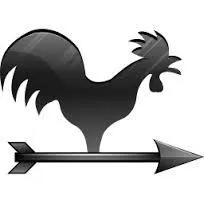Good, 2 years ago my endocrine told me that I should learn to eat for portions to improve the quality of my diabetes, I contacted a nurse who gave me papers and explained how I should ration the food.But the fact is that I only listened to him at the beginning and then I left it, and of course, I no longer remember anything.And now every time I go, he asks me and I have to tell her that the one who knows how to do it is my mother, that she is the one who takes care of food at home (I have 18) even if it is a lie.And the truth is that I would like to learn to ration food again because I want to eat healthy and balanced and keep my diabetes at bay.
That is why I want to ask you if you know any page, application, video, etc. where I can learn to do it in a simple way.
I hope you can help me, greeting.
No signature configured, add it on your user's profile.
Hello @"lauura26".I think you should tell you to explain it to you again because you want to start taking control of what you eat (and you are not while while;)).
Anyway, I attach a table that can be very useful.
In health centers they often have some vessels or buckets that have small brands that indicate how much a ration of almost any food is.Once familiar with the amounts, you will no longer need to use the glass or the bucket.
Then, there are small tricks, for example: two bread fingers (righteous and of a "normal" width) equals 1 ration of hydrates or a rather small apple also equals 1 ration.
I at first weighed everything and it was hell.I had bought a scale with codes for each food.For example, if I wanted to know how many grams of hydrates had an apple, he wrote 540 (the apple code) and in the screw could see the amount of hydrates, fat, protein etc.I do not recommend this system, although it is true that it served me to learn to calculate "in eye" rations (and I'm almost wrong).
You also have an app for the mobile: Link
No signature configured, add it on your user's profile.
Hello, Laura:
You can directly search on Google or in this forum, since once the occasional document or link with the rations of carbohydrates that the main foods provide (depending on their weight).Anyway, I already tell you that it is not difficult to find on Google if you look for it and put something like "carbohydrates", try to see ...
It is very important in type i diabetes to know the rations you eat, since you have to adjust the fast insulin every time you eat.Start to weigh the food and take out your insulin ratios by ration;In the end, with enough training, you will dominate the eye and looking at the dish you can almost say the rations you are going to eat.
Well, I encourage, take care of and take care of food!
30 años. Diabetes tipo 1 desde los 10
Medtronic Minimed 640g
NovoRapid
hA1c: 6%
Sensor Enlite
If it serves you as a starting point.
1 ration HC = 10 gr HC
1 Insulin unit usually moves a ration = eye, this is a common average.It depends on your insulin sensitivity and your ability to absorb HC.
Then, with the foods of the food you will take out the HC containing 100 gr.
Do not forget the glycemic index, to the same amount of HC you can find different postpandrals for it.
I recommend that you study, then it is to continue with the pattern and not decline, but you have to read and think about this;At first it is not easy, then.
There is a hand book, author Juan Madrid Conesa who as a manual to start is correct and practical.You can find it in the book of the book or Iberlibro.
LADA desde 2-2010/ 44 años
Lantus 16 u en tránsito a Toujeo / Novorapid 4/6/5
Paulescu said:
If it serves you as a starting point.
1 ration HC = 10 gr HC
1 Insulin unit usually moves a ration = eye, this is a common average.It depends on your insulin sensitivity and your ability to absorb HC.
Then, with the foods of the food you will take out the HC containing 100 gr.
Do not forget the glycemic index, to the same amount of HC you can find different postpandrals for it.
I recommend that you study, then it is to continue with the pattern and not decline, but you have to read and think about this;At first it is not easy, then.
There is a hand book, author Juan Madrid Conesa who as a manual to start is correct and practical.You still find it at home in the book or Iberlibro.
Wow How much information, it seems that it will cost me a little more than I thought!But well, everything is to put on.Thank you very much for the info !!
No signature configured, add it on your user's profile.
Hi @lauura26, there is a lot of information online to learn so little by little go reading and learning.The more you know, the easier it will be good control.Food is one of the most important pillars to control the disease so everything you learn will serve you.
To me personally, what is best for me is a low diet in hydrates.Especially as a lot of vegetables and some fruit that is my main source of hydrate, some protein in all good meals and fats (olive oil, avocado, nuts, cheese ...).By eating little hydrate it is easier to calculate the insulin and if I am wrong, the rise or decrease is very slight.
I began to read about low hydrates diets and I personally work very well.And every time I see more cases of people who get good control by reducing hydrates.
If you are interested there are books and websites with very good information about this type of diets that explain to you in detail what they consist and health benefits.Of course, there are also many who try to sell you miraculous products so you have to be careful.Good include bibliographic and links to scientific studies and do not promote any product.I have several on my list that I usually read, some of them written by doctors or nutritionists.
It is also very useful to read about how the body metabolizes different nutrients, that helps you understand how you eat blood glucose.
My advice is that you do not stop learning about food and that things always ask you.It is the best way to learn.When they tell you something (even what the doctor tells you), look for information, read everything you can and then get your own conclusions.In Nutrition, things are never white or black and what today is considered healthier can change over time as new scientific studies are done.And doctors sometimes do not update their knowledge about nutrition.Some continue with what they learned at the university and only care about being up to date about medical advances but forget about food that is very important and more for our disease.
Encourage and take care of yourself.
DM1 desde 2003 | Toujeo + Humalog | FreeStyle 2 | HbA1c 5.5
Yesssica_a said:
Hi @lauura26, there are a lot of information online to learn so little by little go reading and learning.The more you know, the easier it will be good control.Food is one of the most important pillars to control the disease so everything you learn will serve you.
To me personally, what is best for me is a low diet in hydrates.Especially as a lot of vegetables and some fruit that is my main source of hydrate, some protein in all good meals and fats (olive oil, avocado, nuts, cheese ...).By eating little hydrate it is easier to calculate the insulin and if I am wrong, the rise or decrease is very slight.
I began to read about low hydrates diets and I personally work very well.And every time I see more cases of people who get good control by reducing hydrates.
If you are interested there are books and websites with very good information about this type of diets that explain to you in detail what they consist and health benefits.Of course, there are also many who try to sell you miraculous products so you have to be careful.Good include bibliographic and links to scientific studies and do not promote any product.I have several on my list that I usually read, some of them written by doctors or nutritionists.
It is also very useful to read about how the body metabolizes different nutrients, that helps you understand how you eat blood glucose.
My advice is that you do not stop learning about food and that things always ask you.It is the best way to learn.When they tell you something (even what the doctor tells you), look for information, read everything you can and then get your own conclusions.In Nutrition, things are never white or black and what today is considered healthier can change over time as new scientific studies are done.And doctors sometimes do not update their knowledge about nutrition.Some continue with what they learned at the university and only care about being up to date about medical advances but forget about food that is very important and more for our disease.
Encourage and take care of yourself.
Thank you very much for the advice !!
No signature configured, add it on your user's profile.
Paulescu said:
If it serves you as a starting point.
1 ration HC = 10 gr HC
1 Insulin unit usually moves a ration = eye, this is a common average.It depends on your insulin sensitivity and your ability to absorb HC.
Then, with the foods of the food you will take out the HC containing 100 gr.
Do not forget the glycemic index, to the same amount of HC you can find different postpandrals for it.
I recommend that you study, then it is to continue with the pattern and not decline, but you have to read and think about this;At first it is not easy, then.
There is a hand book, author Juan Madrid Conesa who as a manual to start is correct and practical.You still find it at home in the book or Iberlibro.
Very important what Paulescu tells you
1 insulin unit will cover a variable amount of carbohydrates according to the time of the day.For example I need a ratio of 10 gr.At breakfast (1 unit for 10 grams HC), a 16 ratio at food (1 unit for 16 HC grams) and 20 at dinner (1 unit for 20 grams HC).You must get your own times to know how much insulin put yourself at any time of the day.
Same as a variable is the sensitivity factor (which makes your glucose descend a fast unit).You should also know it to know how to correct a high glucose without getting to hypoglycemia.
30 años. Diabetes tipo 1 desde los 10
Medtronic Minimed 640g
NovoRapid
hA1c: 6%
Sensor Enlite
@Lauura26 We are going to saturate you from info.
I started with a fixed diet x rations and with a food table to combine them.Then he became independent and as what I want because I gave it forced me to eat a lot.I pass it to you if it helps you
Lada enero 2015.
Uso Toujeo y Novorapid.
@Ruthbia I take the PDF of your diet;).Thank you.
No signature configured, add it on your user's profile.




